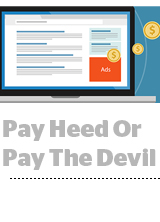 Advertisers are sick of paying for unviewed impressions, and some programmatic exchanges are appeasing them by eating the cost of anything that wasn’t viewed.
Advertisers are sick of paying for unviewed impressions, and some programmatic exchanges are appeasing them by eating the cost of anything that wasn’t viewed.
Viewability guarantees aren’t new. For advertisers that demand it, ad tech companies can optimize toward viewability on open exchanges or run viewable deals in private marketplaces.
The problem is, those options often lack the scale necessary for national branding campaigns, said Sarah Warner, GroupM digital investment lead.
GroupM, known for its hard line on viewability, has been working with AppNexus since last year on a viewability product in which the exchange assumes the cost of unseen impressions.
With that safety net in place, the agency can target a large pool of supply and not end up in a fight with its vendor over reconciliation and potential make goods, Warner said.
The TrustX exchange offers a similar human-viewable guarantee that allows buyers to pay only for viewed inventory, but its reach is limited to the selection of premium publishers that participate, as in a private marketplace.
If AppNexus can cultivate its guarantee across its entire exchange, “the scale is considerable and would free up a lot of work for buyers doing highly viewable PMP deals,” said Josh Bock, senior VP and global managing partner at IPG agency UM Worldwide.
AppNexus originally developed its viewable guaranteed marketplace to pacify large GroupM clients, but demand is coming from all corners.
“In 2018 we saw more appetite for the offering within our base,” said Viren Tellis, senior director of marketplace management at AppNexus.
And it isn’t just agencies, he said. The Trade Desk is buying on the AppNexus guaranteed viewable exchange, and Adform has committed budgets as well.
AppNexus charges a 10% market-making fee for the product, which is only fair, since AppNexus takes on a lot of risk by paying for and absorbing the cost of unseen ads, Tellis said.
As with TrustX, the AppNexus viewable guaranteed market uses third-party vendors, including Integral Ad Science and DoubleVerify, to establish whether an ad is seen.
Although AppNexus hews to the default definition of “viewable” according to the IAB standard for display – at least half of an ad in view for at least one continuous second – that doesn’t fly with everyone on the buy side.
Buyers like Group M, which adheres to a custom standard of 100% in-view for two seconds, can apply their own viewability standards if that’s what they want, Tellis said.
But strict viewability demands aside, part of the value of an entirely viewable campaign is being able to test the IAB standard itself, and how different percentages of an ad in view or time in view drive actual ROI, said UM’s Bock.
If the IAB standard delivers similar results to more stringent definitions of viewability, for instance, it could indicate a lot of value in cheap, semi-viewable inventory.
It’s not always about strict ROI, though. Some brands attribute value simply based on appearing in well-lit inventory, Warner said.
And as brands become “more aware of viewability as a metric, [they] are demanding make goods on the grounds of viewability,” said Brian Lam, director of programmatic at digital agency Operam, despite the fact that “viewability isn’t the best or the end-all be-all KPI.”
Even so, viewability is a metric by which brands – especially those frustrated by programmatic returns – could demand repayment from agencies.
“So, we’re looking for ways to make that table stakes,” Lam said.
This post was syndicated from Ad Exchanger.


More Stories
Google Tops Q1 Estimates with $90B in Revenue Amid Antitrust Turmoil
The Tobacco-Free Future of Phillip Morris With Marian Salzman
WBD Introduces Out-of-Home Member Plan as It Begins Max Password Crackdown